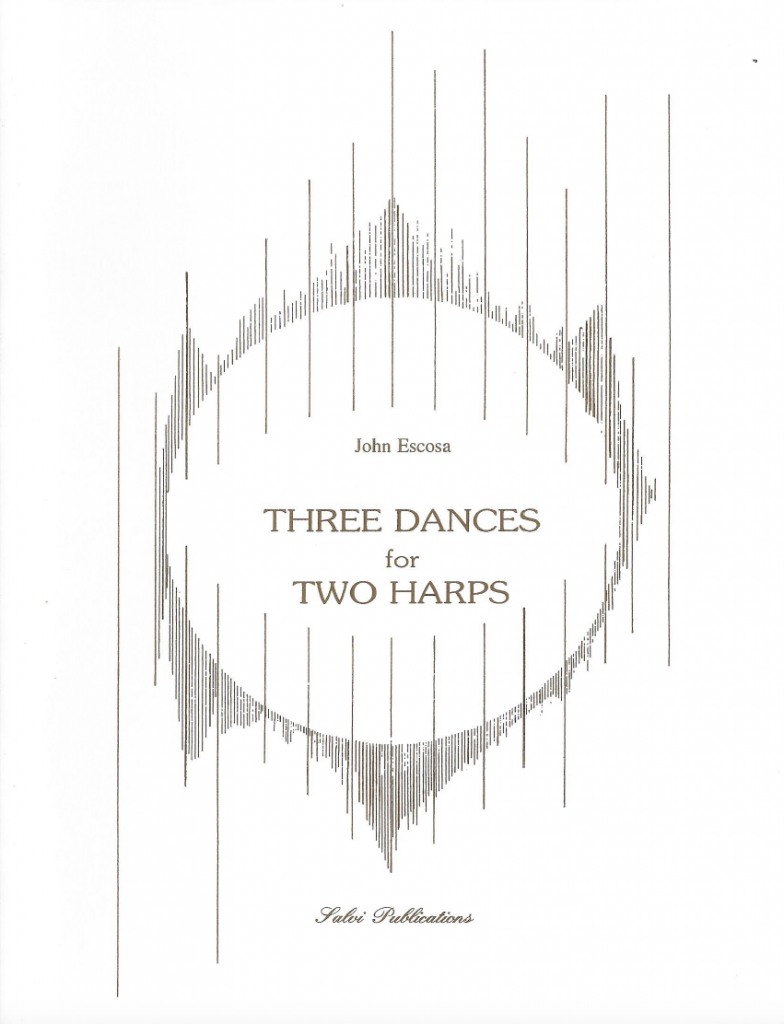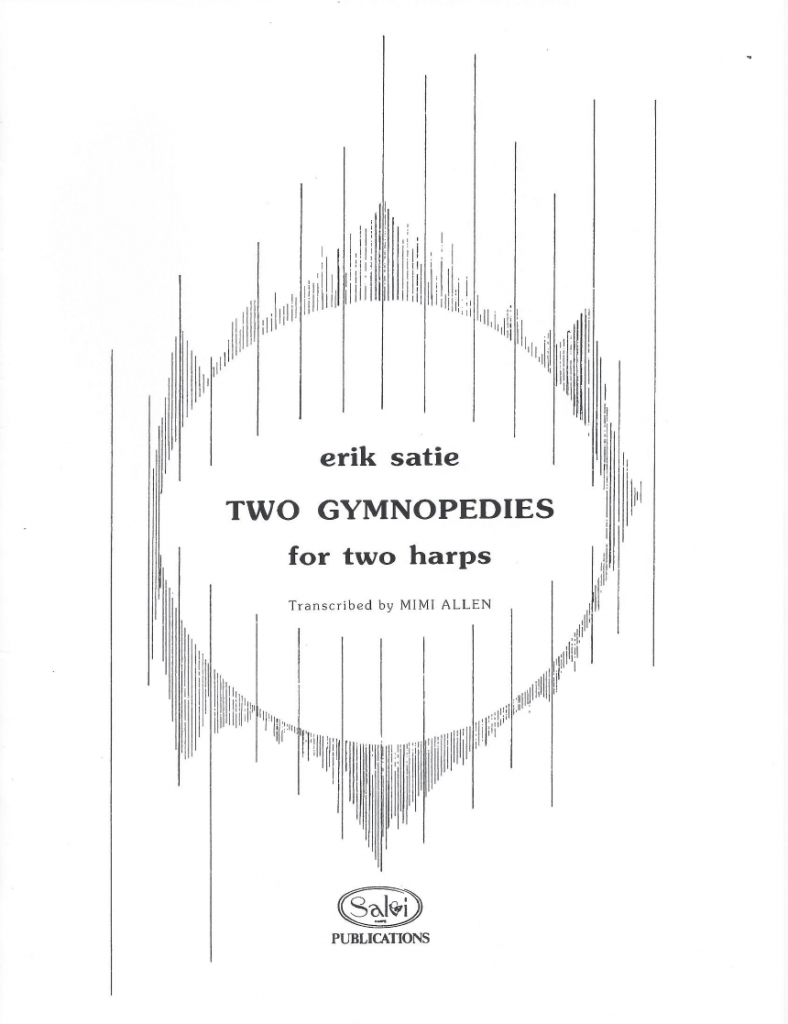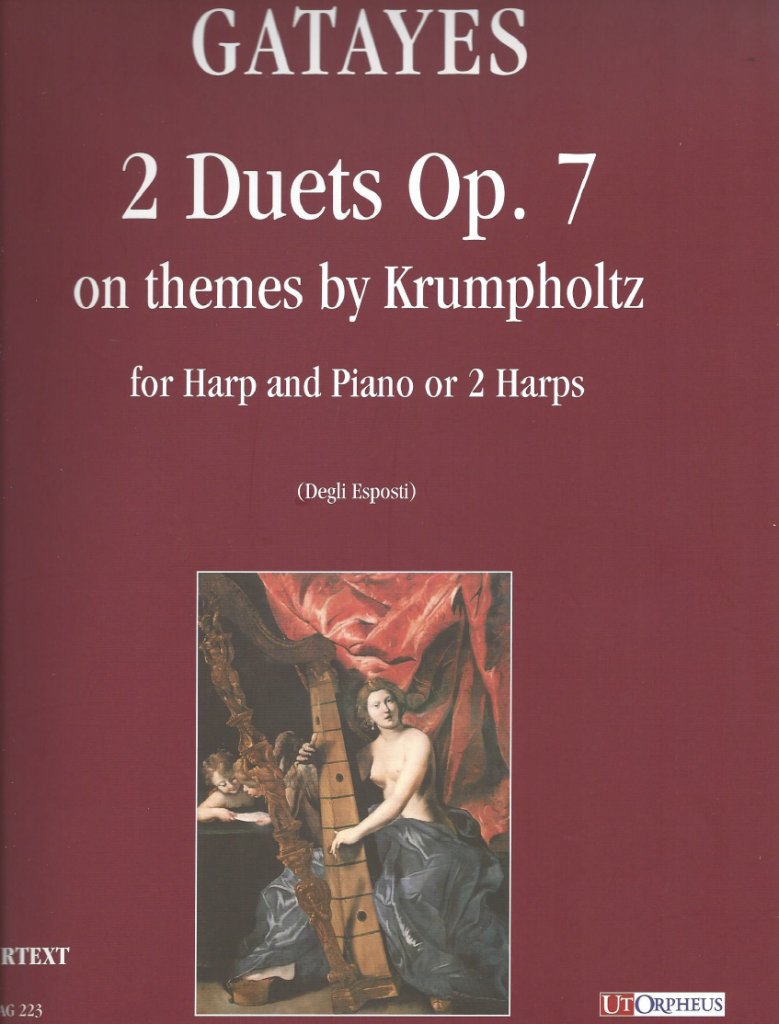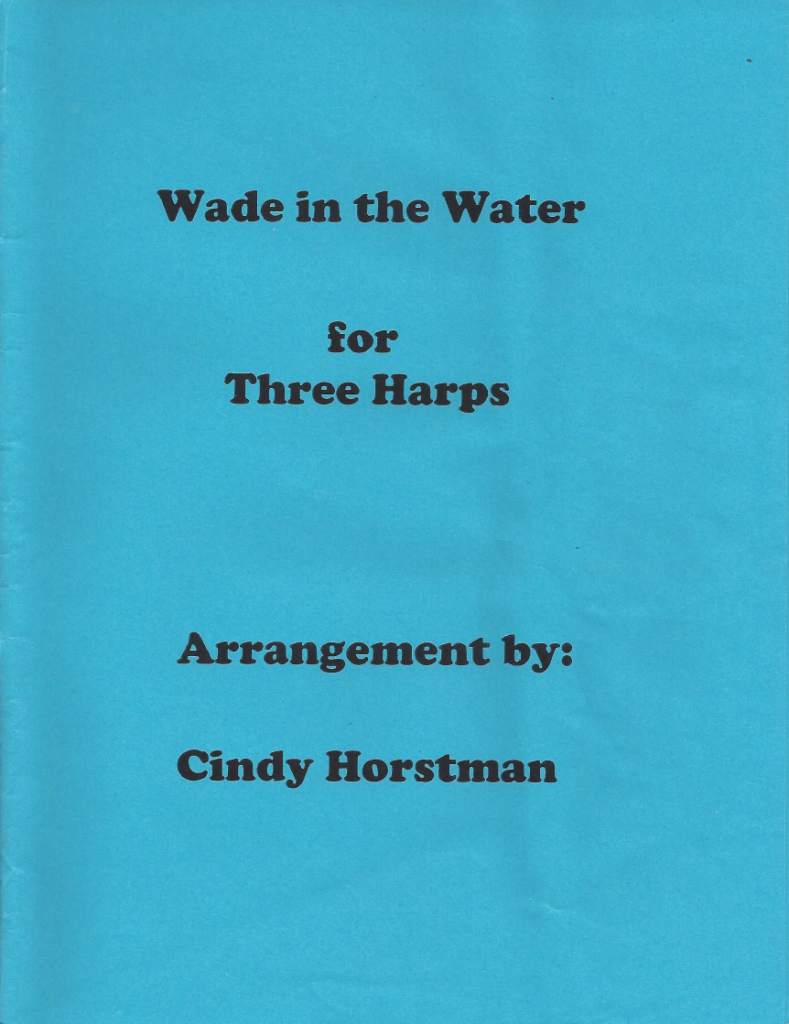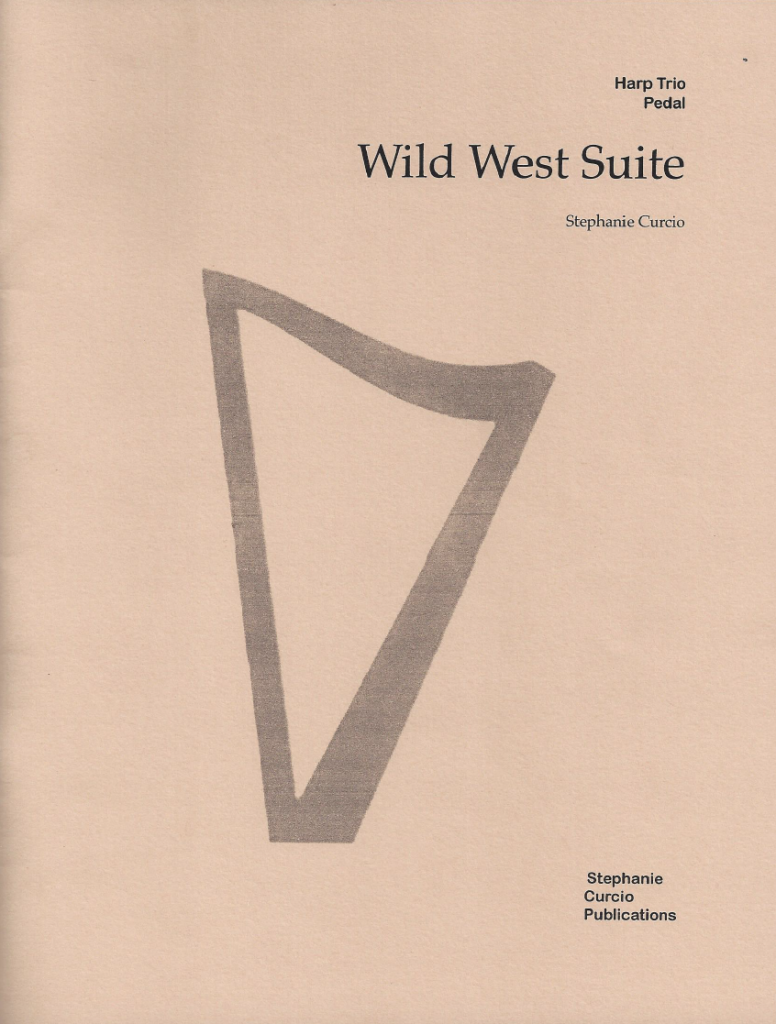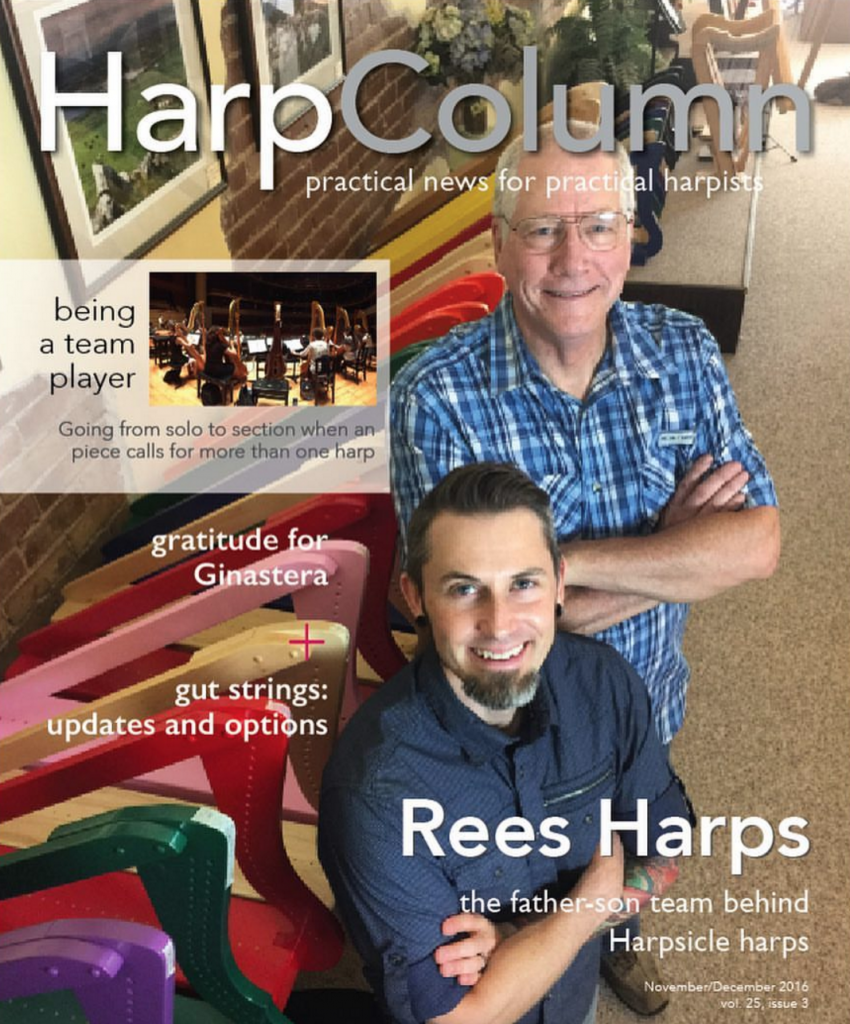If you’re looking for new repertoire for two or three harps, you’re in luck! Several recent publications should fit the bill.
While not actually new, “Three Dances for Two Harps” by John Escosa is a new edition by Salvi Publications that now includes individual harp parts, measure numbers to aid in rehearsal, a full score, and easily readable font. These three original dances include a Gavotte, Minuet, and Gigue. Older harpists may remember the Longstreth & Escosa Duo, and this trio was a staple of their repertoire. Pedal changes are marked below the staff and there are no changes in the Gigue. They are suitable for intermediate to advanced players.
Another republished Salvi edition from the same era and featuring the same improvements is “Two Gymnopedies” for two pedal harps. These compositions by Erik Satie were transcribed by Mimi Allen. Each piece is just two pages and should be sight-readable for the intermediate to advanced player. Pedal changes are marked in the middle of the staff.
Lyon & Healy Publications has a new publication, “Anthology of Harp Duets” Volume 1 adapted by Sarah Bullen and Lillian Lau. There are eight pieces in the collection. The first three are Preludes by J.S. Bach, and they are all quite delightful. There is also “Sonata in A Major, K. 113” by Domenico Scarlatti, and “Sonate in Re” by Padre Antonio Soler from the same time period.
“Etude in E-flat, op. 9, no. 36” by Edmond Lariviere brings us into the next century, followed by “Chanson de Guillot Martin” by Albert Perilhou and “Perpetuum Mobile” by Germaine Tailleferre for the more modern period.
Separate, spiral-bound books are provided for each part as well as a score. It is printed on heavy card stock and the typesetting is easy to read. Pedal changes are marked in the middle of the staff and only occasional fingering is suggested. The music is suitable for advanced players.
In adapting these pieces from solo harp repertoire, the goal of Ms. Bullen and Ms. Lau was not to simply divide the harp part into duets, but to “create two fully textured parts for a rich ensemble experience.” They have indeed accomplished that goal and we shall eagerly await Volume 2!
Emanuela Degli Esposti has edited “Two Duets op. 7 on themes by Krumpholtz” for harp and piano or two harps by Guillaume Gatayes (1774-1846). Published by the Italian company UtOrpheus (Magadis Harp Music), it comes with two separate parts and a score printed on oversized, ecru paper.
In the preface, we are given some history on Gatayes who played harp in addition to being a guitar virtuoso. One of his sons was also a harpist and the other was a composer, pianist, and conductor. These compositions are an homage to the master harpist and composer Johann Baptist Krumpholtz (1745-1790). They are based on themes taken from three different compositions by Krumpholtz: Sonata in F major op. 15 n. 1 (first movement of the first duet), Sonata in B flat op. 13 n. 1 (second and third movement), and Sonata in C major, op. 13 n. 3 (second duet).
Both duets have three movements: Allegretto, Andante, and Scherzo. There is no fingering or any pedal markings. They may remind you a little of the Naderman Sonatas. There are some sections that seem busy and perhaps a little muddy, but they are nevertheless charming period pieces for the intermediate to advanced player.
For harp trio there are some new compositions in a more pop style. Stephanie Curcio has written “Wild West Suite” for three pedal harps with an optional lead part. There are three original tunes in the suite that are reminiscent of the Old West.
“Yeeha” has the easy gait of a horse on a dusty trail. The piece is built entirely on I, IV, and V chords and features pedal slides and glisses. “Ballade of a Lonesome Cowboy” brings to mind a cowboy sitting by a campfire. It’s a pretty tune with a country flavor. “Roundup” is a more energetic piece with lots of percussive effects to imitate horses’ hooves.
The rhythm is challenging in some spots and the special effects make it more suitable for intermediate or better players. There are separate pull out parts plus a score. All pedal changes are clearly marked in the middle of the staff and some fingering is suggested. You can hear electronic excerpts from the tunes on her website (stephaniecurciopublications.com:printed music:medium).
This is a creative and different suite for the harp. Have fun with it!
Cindy Horstman did an arrangement of “Wade in the Water,” a spiritual for three harps as a commission for the 2013 Harp in Worship Conference. This is a jazzy arrangement of a gospel classic showcasing a percussive short fingernail gliss played against muffled strings. Part 2 handles most of this special effect, but occasionally trades for the melody with Part 1. Part 3 plays a slap bass, some muffles, and has all the pedal changes. Therefore, Parts 1 and 2 could be played on lever harp. Some glisses and bisbigliando end the piece.
Not only can you hear the entire piece on her website (cindyhorstman.com), but she includes a video of each individual part. You can’t ask for more than that!
Team up with some other harpists and try these diverse contributions to the duo and trio repertoire. •
Jan Jennings is the music review editor for Harp Column and is the author of The Harpist’s Complete Wedding Guidebook and Effortless Glissing.





